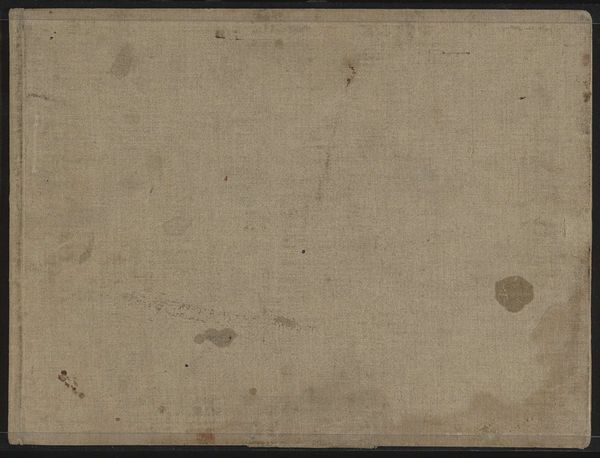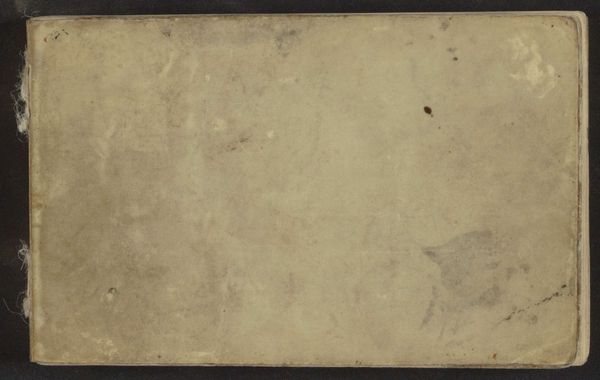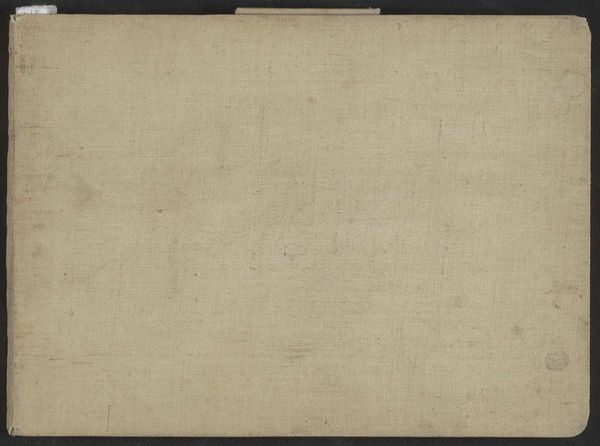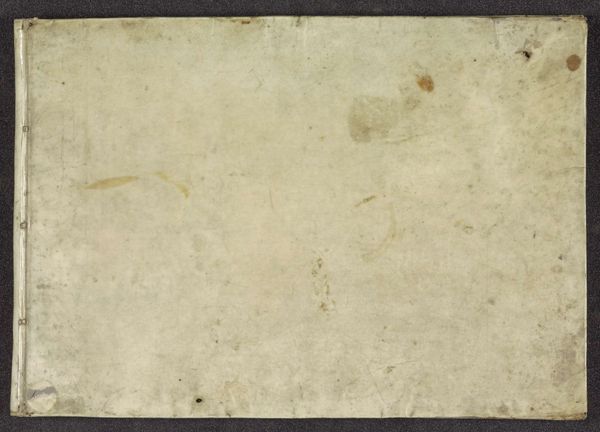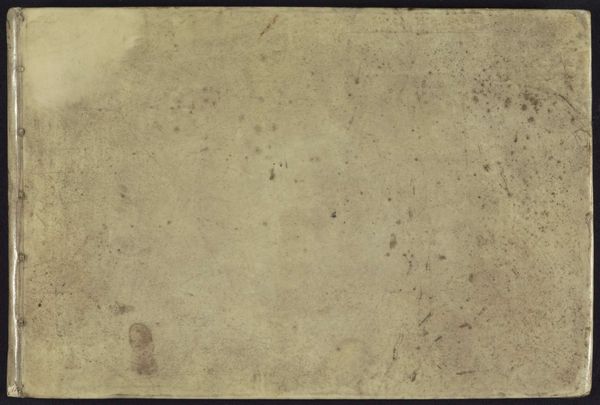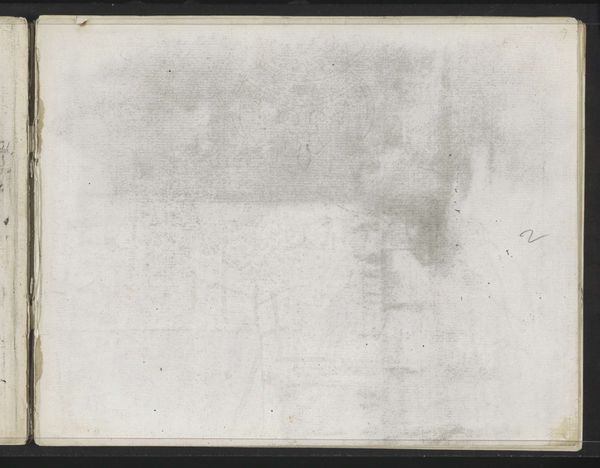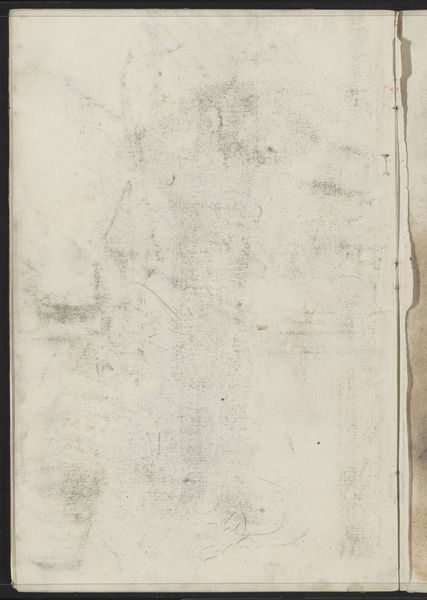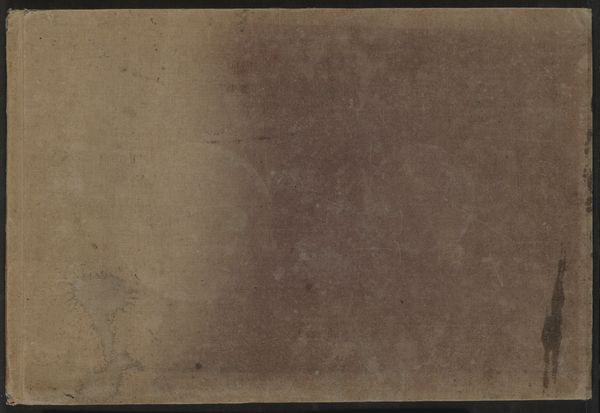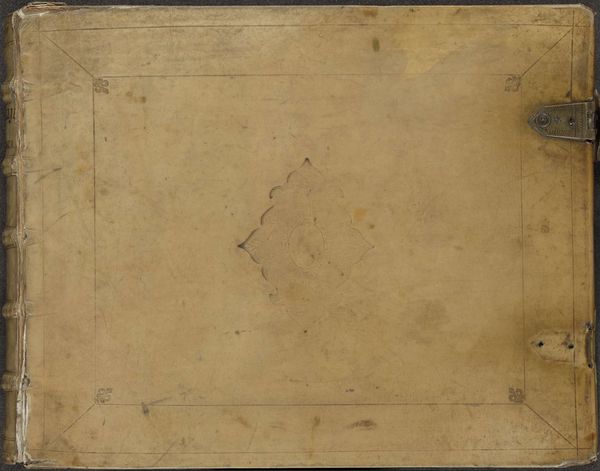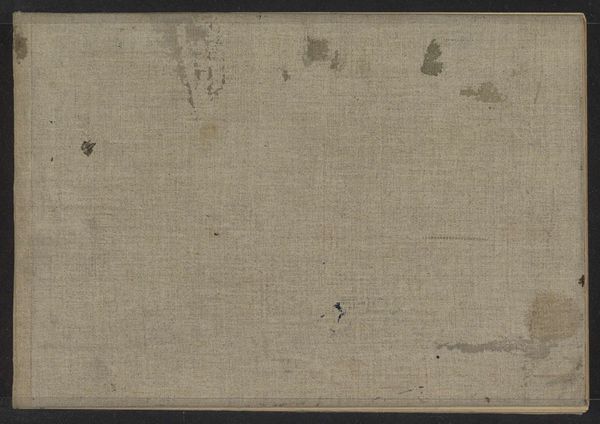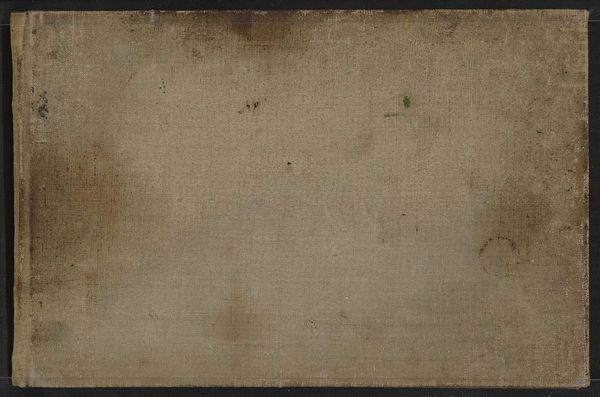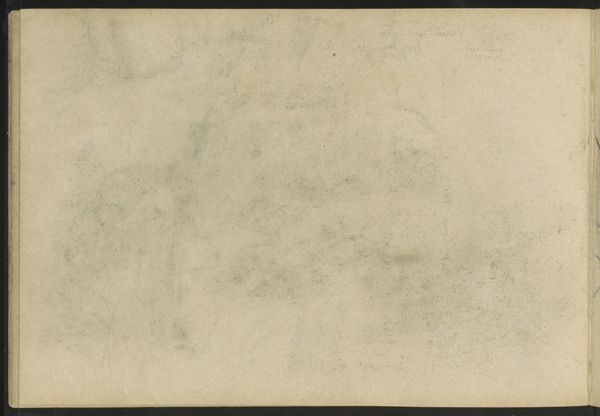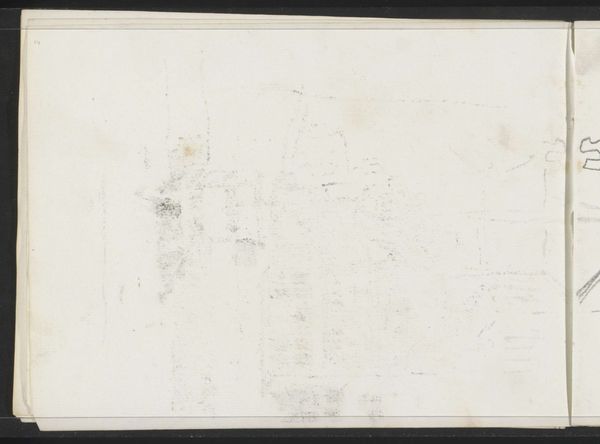
drawing, paper
#
drawing
#
muted colour palette
#
paper
#
romanticism
Dimensions: height 233 mm, width 335 mm, thickness 63 mm, width 635 mm
Copyright: Rijks Museum: Open Domain
Curator: Here we have Andreas Schelfhout's "Sketchbook with 75 leaves", dating from around 1811 and currently held at the Rijksmuseum. It’s a bound collection of drawings on paper. Editor: My first impression is one of subdued anticipation, really. It has this quiet, almost melancholic quality. It feels like it has witnessed stories it cannot tell. The texture, that faded, almost monastic cover... Curator: Right, that’s interesting. I'm immediately drawn to the book’s construction; you can see how it was meticulously bound. The quality of the paper itself indicates a specific level of artisanal craft, suggesting a patron who valued artistic exploration. Someone was very involved in sourcing and making this. Editor: And the Romanticism! What kind of relationship did the artist have to landscape and society at large, particularly regarding the political and social changes happening during this period, or what kind of patron provided it? Think of the shifting socio-economic dynamics. Who got to experience or use objects like these and who didn't? How was labor valued then? Curator: Yes, thinking about Romanticism as a movement deeply entrenched within specific class structures certainly prompts useful considerations. The production values clearly suggest a market catered to specific social circles interested in sketching the picturesque qualities of the countryside. Editor: We could further explore the sketchbook itself as a symbol of a mobile, educated elite capturing or "possessing" landscapes and other populations through sketches. It would be good to understand if Schelfhout ever employed any assistance to construct his sketchbooks; that way, we acknowledge any exploitation of the invisible or forgotten laborers behind artwork from this period. Curator: Precisely, looking beyond the single author towards understanding networks of materials, craftspeople and trading routes could unveil some unspoken stories about art making during that era, yes. Editor: Right. By bringing social history into conversation with formal art historical considerations we're better equipped to analyze art in meaningful ways! Curator: I find this approach allows for considering artistic practice more completely than simply focusing on the final artifact. It shows art-making as enmeshed within socio-economic and historical systems of material culture. Editor: It's a richer perspective for the observer. Curator: Indeed.
Comments
No comments
Be the first to comment and join the conversation on the ultimate creative platform.
